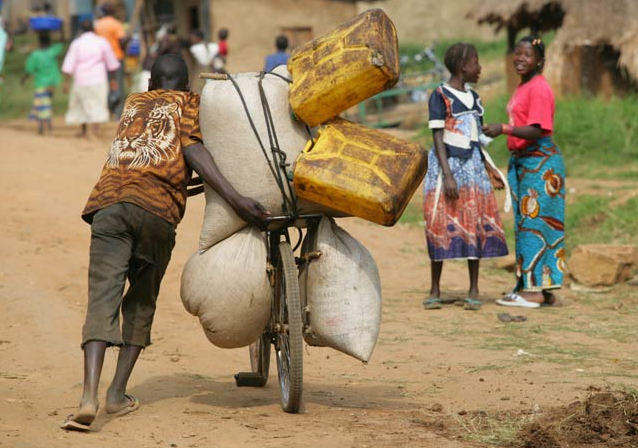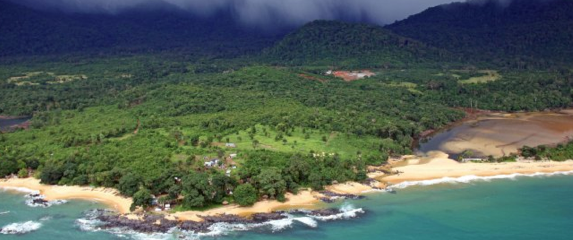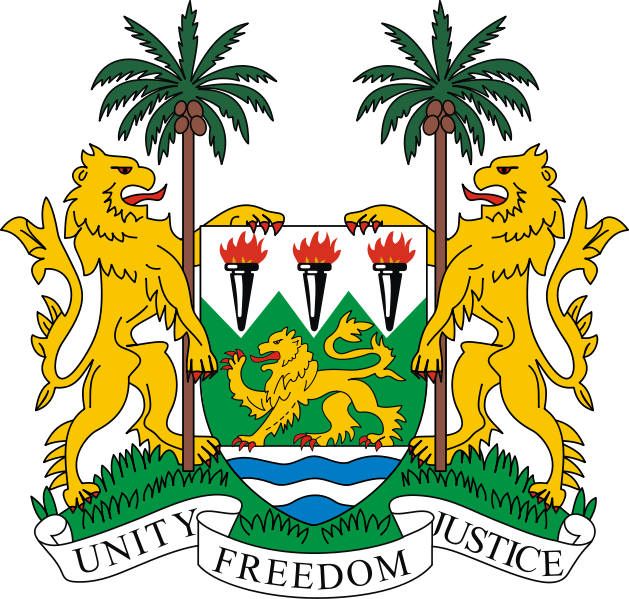Sierra Leone's Second National Communication
Project Overview
The creation of a National Communication offers countries the opportunity to contribute with technically sound studies and information that can be used for designing mitigation and adaptation measures, and project proposals that can and will help increase their resilience to the impacts of climate change. Activities generally include: V&A assessments, Greenhouse Gas Inventory preparation, Mitigation Analysis or Education, and awareness raising activities. The ultimate goal is the integration of climate change considerations into relevant social, economic and environmental policies and actions.
Climate Change is known to have adversely affected the environment, agriculture, food security, and even the lives and livelihood of large communities. Fishermen are known to have lost their lives in storms and passenger boats have encountered weather-related accidents, even though some go unreported. Flooding is known to have affected agriculture and habitats of people in Sierra Leone and their suffering has been aggravated by the attending health problems of water-borne diseases (typhoid dysentery cholera and diarrhea) due to lack of safe drinking water.
To view progress on Sierra Leone's SNC click here.
Project Details
Sierra Leone has a tropical climate with two distinct seasons. The Dry Season (December to April) is dominated by winds from the northeast (i.e. the North-east trades), and the rainy season (May to November). Both seasons may have some variations in the commencement and duration.
Sierra Leone has developed many adaptation projects to address adverse effects of climate change based on existing coping mechanisms and practices such as Develop and enact appropriate policies and regulations relevant to the development of coastal communities, urban growth planning, and critical coastal ecosystems preservation and the Establishment of a National Sea- Level Observing System for Sierra Leone.
Sierra Leone has an area of 72,325 km2 between latitudes 6055’ and 10000’ North and between longitudes 10014’ and 13017’ West. The coastal zone of Sierra Leone extends for a distance of about 465 km. The configuration of the coastline and international boundaries of Sierra Leone encloses a very compact country. Sierra Leone is bordered in the northeast by the Republic of Guinea, in the south and southeast by the Republic of Liberia and in the west by the North Atlantic Ocean.
Climate Change is known to have adversely affected the environment, agriculture, food security, and even the lives and livelihood of large communities. Fishermen are known to have lost their lives in storms and passenger boats have encountered weather-related accidents, even though some go unreported. Flooding is known to have affected agriculture and habitats of people in Sierra Leone and their suffering has been aggravated by the attending health problems of water-borne diseases (typhoid dysentery cholera and diarrhea) due to lack of safe drinking water.
Key Vulnerabilities:
- Agriculture/Food Security
- Coastal Zones and Marine Ecosystems
- Water Resources
- Public Health
- Fisheries
- Land Resources
- Terrestrial Ecosystems
- Soils
- Biodiversity
- Energy
Key Results and Outputs
- Sustainable development and the integration of climate change concerns into medium- and long-term planning
- Inventories of anthropogenic emissions by sources and removals by sinks of greenhouse gases
- Measures contributing to addressing climate change
- Research and systematic observation
- Climate change impacts, adaptation measures and response strategies
- Education, training and public awareness
Potential Adaptation Measures:
Agriculture and Food Security
- Educational & outreach activities to change management practices to those suited to climate change
- Switch to different cultivars
- Improve and conserve soils
- Enhance irrigation efficiency and/or expand irrigation
- Establish seed banks
Water Resources
- Develop and introduce flood and drought monitoring and control system
- Improve or develop water management
- Alter system operating rules, e.g. pricing policies, legislation
Coastal Zones and Marine Ecosystems
- Develop Integrated Coastal Zone Management
- Develop planning/new investment requirements
- Protect, including building sea walls, and beach nourishment
- Retreat
- Research/monitor the coastal ecosystem
Monitoring and Evaluation
In 1992, countries joined an international treaty, the United Nations Framework Convention on Climate Change, to cooperatively consider what they could do to limit average global temperature increases and the resulting climate change, and to cope with whatever impacts were, by then, inevitable.
Parties to the Convention must submit national reports on implementation of the Convention to the Conference of the Parties (COP). The required contents of national communications and the timetable for their submission are different for Annex I and non-Annex I Parties. This is in accordance with the principle of "common but differentiated responsibilities" enshrined in the Convention.
The core elements of the national communications for both Annex I and non-Annex I Parties are information on emissions and removals of greenhouse gases (GHGs) and details of the activities a Party has undertaken to implement the Convention. National communications usually contain information on national circumstances, vulnerability assessment, financial resources and transfer of technology, and education, training and public awareness.
Since 1994, governments have invested significant time and resources in the preparation, collection and validation of data on GHG emissions, and the COP has made determined efforts to improve the quality and consistency of the data, which are ensured by established guidelines for reporting. Non-Annex I Parties receive financial and technical assistance in preparing their national communications, facilitated by the UNFCCC secretariat.


